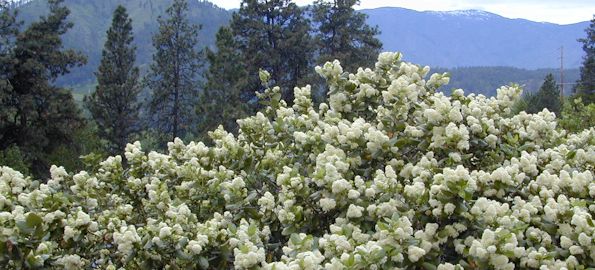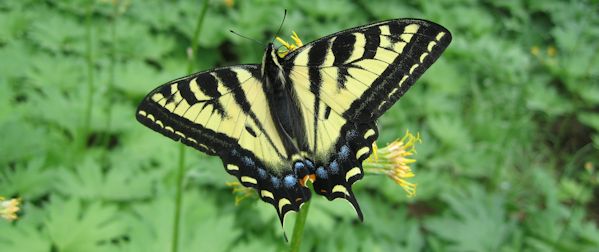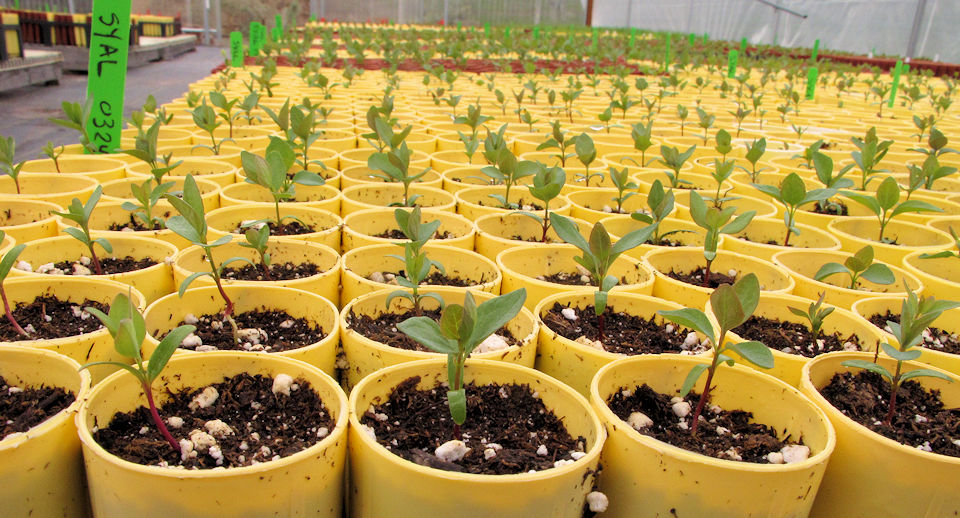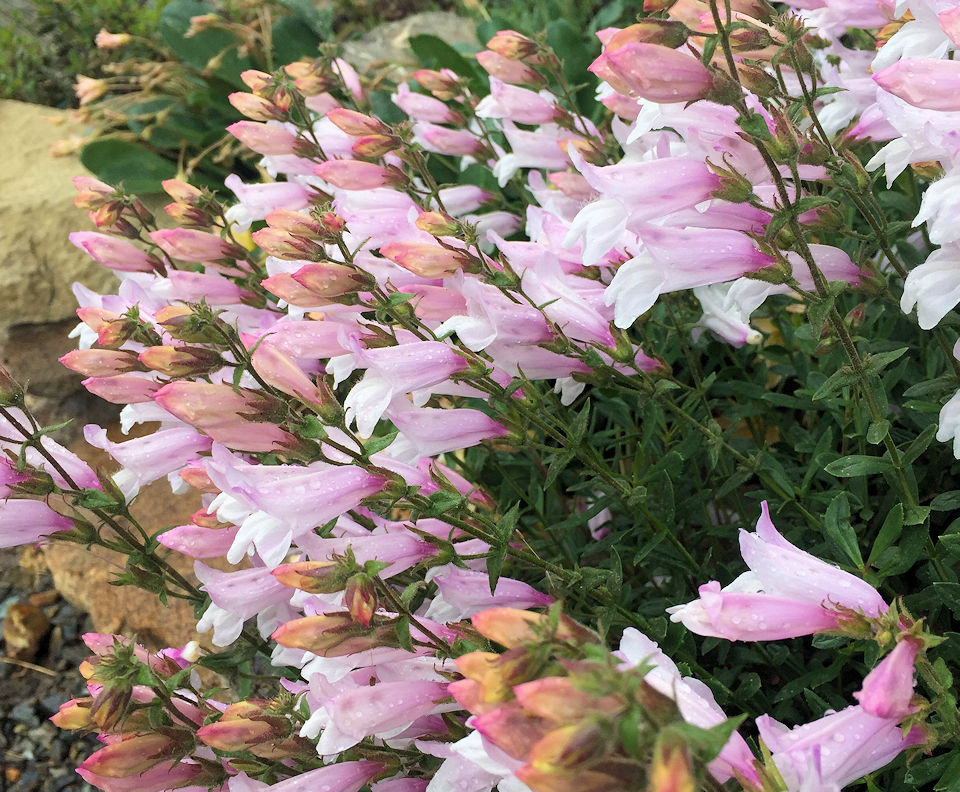A key shrub for butterflies
If you want to attract butterflies to your landscape you’ll want to have as rich a diversity of native plants as possible, and include plants that are nectar sources for the adults and those that are food plants for larvae (caterpillars). A few plants are both great nectar sources and will also host several species of butterfly larvae. For areas East of the Cascades the premier plant may be snowbrush ceanothus (Ceanothus velutinus).
Sites above 2000′ may have this fairly common shrub in full bloom about now. Snowbrush (also known as mountain balm) will have masses of white flowers with a strong perfume (a smell that most people like and some detest!) It has shiny, leathery, evergreen leaves on a shrub that is usually 4-5′ tall with an equal or greater spread. It is a nitrogen fixer and quite drought-tolerant, qualities that help it quickly colonize disturbed areas in the forest, especially after burns. Snowbrush ceanothus velutinus may be the most widespread species of ceanothus in Washington, occurring on both sides of the mountains. In central Washington we also have redstem ceanothus (C. sanguineus), a taller and deciduous species, as well as the rare and beautiful prostrate ceanothus or mahala mat (C. prostratus), a mat-forming evergreen species with blue flowers; this latter one I’ve seen only in several drainages up the Entiat Valley, although it is more common from Klickitat County south through Oregon and California. To learn more about the range of lovely ceanothus species see Mark Turner’s blog post on the “Native Plants and Wildlife Gardens” site (//nativeplantwildlifegarden.com/cornucopia-of-ceanothus/)
For butterflies, the pale swallowtail, California tortoiseshell and several species of hairstreaks and blues use snowbrush ceanothus. Several years ago I was traveling in early summer along Mountain Home Road above Leavenworth when I came upon a snowbrush bush that was alive with jiggling chrysalises (probably California tortoiseshell) suspended from its nearly defoliated branches. The ceanothus bushes on either side were untouched; quite the sight! Dr. David James, a great butterfly authority for our region, puts snowbrush ceanothus top of a list of nectar plants for a butterfly friendly landscape:
1. Snowbrush ceanothus
2. Showy milkweed (Asclepias speciosa)
3. Coyote mint (Monardella odoratissimma)
4. Blanketflower (Gaillardia aristata)
5. Northern buckwheat (Eriogonum compositum)
6. Sulfur buckwheat (Eriogonum umbellatum)
7. Spreading dogbane (Apocynum androsaemifolium)
8. Goldenrod (Solidago sp.)
And I grow them all in the nursery (except the goldenrod)!




